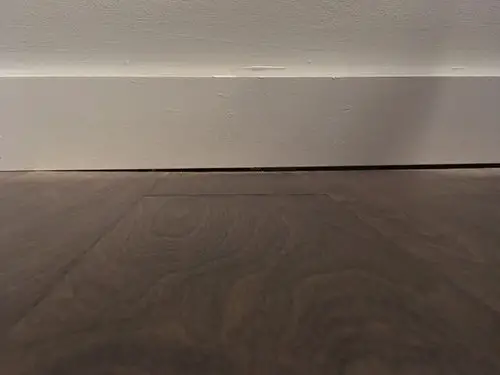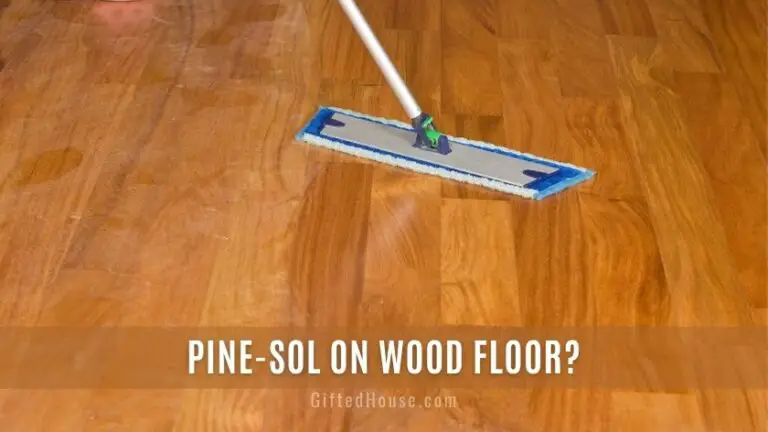How Many Coats of Polyurethane on Wood Floors
When it comes to how many coats of polyurethane on wood floors, the general rule of thumb is three. However, there are a few factors that can impact this number. The type of wood flooring you have and the level of traffic in your home are two big factors.
If you have a light-colored hardwood floor, you may be able to get away with two coats of polyurethane. But if you have a dark-colored hardwood or one that sees a lot of traffic, you’ll likely need three coats to protect your floors and keep them looking their best.
When it comes to applying polyurethane to wood floors, the general rule of thumb is to apply as many coats as necessary to achieve the desired level of protection. In most cases, this will be somewhere between three and six coats.
Applying more than six coats of polyurethane is generally not recommended, as this can start to diminish the clarity of the finish and create a buildup that is difficult to remove.
If you are looking for a high-gloss finish, four or five coats may be necessary. For a satin or semi-gloss finish, three coats should suffice.
It is important to allow each coat of polyurethane to fully cure before applying the next.
Depending on the temperature and humidity levels in your home, this can take anywhere from 24 hours to a few days. Once all coats have been applied, give the floor a final buffing with a soft cloth before enjoying your newly protected surface!
2 Vs. 3 Coats of Polyurethane
When it comes to applying polyurethane, there is no one-size-fits-all answer. The number of coats you need will depend on the look you’re going for and the type of wood you’re working with. In general, though, most projects will require either two or three coats of polyurethane.
Two coats of polyurethane are typically enough to protect your project and give it a nice sheen. This is a good option if you’re looking for a natural finish or if you’re working with a soft wood like pine. Three coats of polyurethane will provide more protection and create a deeper, richer color.
This is a good choice for hardwoods or for projects that will see a lot of wear and tear.
Applying multiple coats of polyurethane can be time-consuming, so be sure to plan ahead before starting your project. And always sand between each coat to ensure a smooth, professional finish.
2 Or 3 Coats of Oil-Based Polyurethane on Floors
When deciding how many coats of oil-based polyurethane to apply on your floors, there are a few things to consider. The first is the type of wood flooring you have. If you have a softer wood, like pine, you’ll likely want to do two or three coats.
Harder woods, like oak, can usually get by with just two coats.
The second thing to consider is the level of traffic in your home. If you have kids and pets running around all the time, you’ll probably want to err on the side of three coats.
But if your home is more low-key, two coats should suffice.
Finally, take into account your own personal preferences. Some people prefer the look of three coats because it gives the floors a deeper shine.
Others find that two coats is plenty and saves them some time and money. Ultimately, it’s up to you!
How Many Coats of Sealer on Hardwood Floors
When it comes to applying sealer on hardwood floors, the general rule of thumb is to apply two coats. This will provide adequate protection for your floors and help to extend their life. However, there are some cases where you may need to apply a third coat of sealer.
If your floors are particularly porous or if they are subject to high traffic, a third coat of sealer may be necessary.
How Long Does Polyurethane Last on Hardwood Floors
Polyurethane is a type of clear coat that is often used on hardwood floors. It provides protection from scratches and wear, and can also give the floor a glossy finish. Polyurethane typically lasts for several years before it needs to be reapplied, making it a very low-maintenance option for hardwood floors.
Read : Best Applicator for Polyurethane on Hardwood Floors
How Many Coats of Water-Based Polyurethane
Are you looking to protect your hardwood floors with a water-based polyurethane? If so, you may be wondering how many coats you need to apply.
Water-based polyurethanes are durable and provide a high-gloss finish, making them a popular choice for protecting hardwood floors.
Generally, two coats are sufficient, but in some cases, three coats may be necessary.
Here are a few things to keep in mind when deciding how many coats of water-based polyurethane to apply:
1. The type of wood flooring you have.
Some woods are more porous than others and will require more coats of polyurethane to seal properly.
2. The level of traffic in the area where the flooring is located. If your floors see a lot of foot traffic, you may want to consider applying an extra coat of polyurethane for added protection.
3. The appearance you’re going for. If you want a super glossy finish, more coats may be necessary. Conversely, if you’re aiming for a more natural look, two coats should suffice.

Credit: www.valentiflooring.com
Is 2 Coats of Polyurethane Enough?
There are a few things to consider when deciding how many coats of polyurethane to apply to your project. The type of wood you’re working with, the look you want to achieve, and the amount of traffic the piece will see are all important factors.
Generally speaking, two coats of polyurethane should be enough for most projects.
This will provide adequate protection from scratches, stains, and wear-and-tear. If you’re working with a particularly soft or porous wood, or if the piece will see a lot of use, you may want to consider adding a third coat.
Applying more than three coats of polyurethane is generally unnecessary and can actually start to detract from the finish.
Too many coats can make the finish appear cloudy and can cause drips and runs. It’s always better to err on the side of too few coats rather than too many.
If you’re unsure whether your project needs one coat or two (or even three), test the finish in an inconspicuous area before moving on.
This will help you avoid any unpleasant surprises down the road.
Essential: How Do You Draw a Simple Wood Floor?
Can You Put Too Many Coats of Polyurethane On?
Polyurethane is a durable finish that can be applied to wood floors, furniture, and other surfaces. It is available in both oil-based and water-based formulas. Polyurethane can be applied with a brush, roller, or rag.
It dries quickly and cures within 24 hours.
Too much polyurethane can be problematic because it can result in a sticky surface that is difficult to clean or repair. Excess polyurethane can also yellow over time.
When applying polyurethane, it is important to follow the manufacturer’s instructions and to only apply as many coats as necessary.
Read also: Do You Have to Rinse Pine-Sol off Floors
Do You Have to Sand between Coats of Polyurethane on Floors?
It is not necessary to sand between coats of polyurethane on floors, although it can give the finish a smoother appearance. If you choose to sand, use a fine-grit paper and make sure the previous coat is completely dry before beginning.
How Many Coats of Finish Do You Put on Hardwood Floors?
There are a few things to consider when deciding how many coats of finish to put on hardwood floors. The type of wood, the level of traffic and the desired look all play a role in the decision.
For most woods, three coats of polyurethane is sufficient.
This provides a durable finish that can withstand heavy traffic. If you’re looking for a high-gloss finish, you may need to apply more coats. If you have a light-colored wood, you may want to stain it before applying any finishes.
If your floors see a lot of traffic, you may want to apply more than three coats of finish. This will help protect the floors from wear and tear. You may also want to consider using a harder finishes such as epoxy or urethane.
Read to know: Does Pine-Sol Damage Hardwood Floors
Hardwood Floor. 2nd coat of polyurethane.
Conclusion
How Many Coats of Polyurethane on Wood Floors?
When it comes to finishing a wood floor, there are several options available. One of the most popular and durable finishes is polyurethane.
But how many coats of polyurethane should you use on your floors?
There are two types of polyurethane finishes: oil-based and water-based. Oil-based polyurethanes have a stronger odor and take longer to dry, but they provide a more durable finish.
Water-based polyurethanes have very little odor and dry quickly, but they don’t last as long as oil-based finishes.
Most experts recommend using three coats of either type of finish, allowing each coat to dry thoroughly before applying the next. However, if you’re using an oil-based finish, you may need to apply four or even five coats for maximum durability.
And if you have a high-traffic area, such as a kitchen or entryway, you may want to use even more coats.
No matter how many coats you apply, be sure to sand between each coat so that the finish will be smooth and even. Once the final coat has dried completely, enjoy your beautiful new floors!




